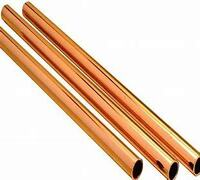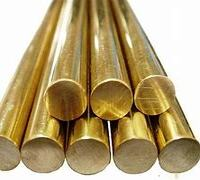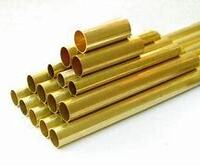1. Introduction
In the past 48 hours, a surge in copper scrap prices has sparked renewed interest among recyclers and DIY enthusiasts looking to cash in on copper-rich materials. With global demand for copper rising—especially for renewable energy infrastructure—knowing how to properly prepare copper for recycling can significantly boost your earnings. One of the most common and profitable tasks? Stripping copper wire for scrap.

Whether you’re salvaging from old appliances, construction debris, or HVAC systems, clean, bare copper fetches a much higher price than insulated wire. This guide will show you the best way to strip copper wire safely and efficiently, while also helping you identify other valuable copper forms like copper rod, copper strip, and copper tubing.
2. Why Stripping Copper Wire Matters
Recycling centers pay top dollar for clean, bare copper. Insulated wire—often called ‘dirty copper’—sells for far less because recyclers must process it further. By stripping insulation yourself, you skip the middleman and get paid the full copper rod price or copper strip price.
Plus, burning copper wire for scrap is not only illegal in many areas due to toxic fumes, but it also damages the copper, reducing its value. Proper stripping preserves the metal’s integrity and ensures you get the best return.
3. Tools and Materials You’ll Need
- Wire strippers (manual or automatic)
- Utility knife (for thick cables)
- Copper wire stripping machine (optional, for large volumes)
- Safety gloves and goggles
- Bucket or container for sorted copper
- Magnet (to test for copper-clad steel vs. pure copper)
4. Step-by-Step: How to Strip Copper Wire for Scrap
4.1. Sort Your Wire First

Not all copper is created equal. Separate your materials into categories:
- Bare bright copper (clean, uncoated, no solder)
- Insulated copper wire (thick or thin)
- Copper strip or flat copper strip (often from transformers or bus bars)
- Copper rod or copper round bar (from grounding systems or industrial parts)
- Copper tubing (like aircon copper pipe or 15mm copper pipe)
Use a magnet to check for copper bonded steel or copper clad steel ground rod—these contain less copper and are worth less.
4.2. Manual Stripping for Small Batches
For household quantities, manual stripping works well. Use a wire stripper designed for the gauge of your wire. For thick cables, carefully slice the insulation lengthwise with a utility knife, then peel it off.
Avoid nicking the copper inside—deep cuts reduce weight and value. This method is ideal for stripping copper wire for scrap when volume is low but quality matters.
4.3. Mechanical Stripping for Larger Jobs

If you’re processing more than a few pounds, invest in or rent a copper wire stripping machine. These devices quickly remove insulation without damaging the metal and are the fast way to strip copper wire.
They’re especially useful for stripping wire for recycling from motors, HVAC units, or demolition sites. Look for models that handle both thin and thick gauges.
4.4. What NOT to Do: Avoid Burning Copper Wire
Some people burn insulation off to save time, but this is a bad idea. Burning copper wire for scrap releases hazardous dioxins and blackens the copper, lowering its grade. Most scrap yards reject burned wire outright.
Stick to mechanical or manual methods—they’re safer, legal, and more profitable.
5. Identifying Other Valuable Copper Forms
While stripping wire, you might encounter other high-value copper items:
- Copper earth rod or earthing rod copper: Often solid or copper bonded. Check if it’s pure copper or copper bonded steel—use a file to expose the core.
- Copper strip or flat copper strip: Look for copper strip for earthing, beryllium copper strip, or nickel plated copper strip. These are common in electrical panels.
- Copper tubing: Includes air conditioning copper pipe, 22mm copper pipe, or 3/4 copper tubing. Clean and straight pieces fetch premium prices.
- Copper bar or copper bus bar: Flexible copper bus bar or copper flat bar from industrial equipment can be very valuable.
Always verify purity—copper clad earth rod or copper clad steel earth rod contains a steel core and is worth less than solid copper.
6. Maximizing Your Scrap Value
Once stripped, bundle your copper by type. Clean off dirt, oil, or solder residue—cleaning copper pipe or wire increases its grade.
Call local scrap yards to compare copper rod price, copper strip price, and ac copper pipe price before selling. Prices vary widely, and some yards pay more for specific forms like 1mm copper strip or copper earth strip 25x3mm.
Ask: ‘Do you have copper strip near me?’ or ‘What’s your earthing rod price today?’ to get accurate quotes.
7. Conclusion
Stripping copper wire for scrap doesn’t have to be tedious or dangerous. With the right tools and techniques, you can safely extract maximum value from every piece of copper you recover. Avoid shortcuts like burning, sort meticulously, and always verify whether you’re dealing with pure copper or copper bonded materials. Whether it’s copper rod, copper strip, or aircon copper tube, clean, well-prepared copper always wins at the scrap yard.
Our Website founded on October 17, 2012, is a high-tech enterprise committed to the research and development, production, processing, sales and technical services of ceramic relative materials such as How. Our products includes but not limited to Boron Carbide Ceramic Products, Boron Nitride Ceramic Products, Silicon Carbide Ceramic Products, Silicon Nitride Ceramic Products, Zirconium Dioxide Ceramic Products, etc. If you are interested, please feel free to contact us.

